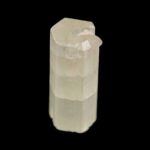
A number of agents can enhance remineralisation of initial caries lesions including fluoride-containing agents, casein phosphopeptide-amorphous calcium phosphate (CPP-APP) containing pastes, bioactive glasses and self-assembling peptides. Synthetic nano-hydroxyapatite (Ca10(PO4)3(OH)2)/zinc- carbonate-hydroxyapatite nanocrystals (nHA) is a bioactive-compatible material similar in composition to the apatite crystals of human enamel that has been used as micro-cluster or nanocrystalline forms to induce remineralisation. Studies of nano-hydroxyapatite to date have produced contrasting findings.
The aim of this review was to evaluate the efficacy of fluoride-free nano-hydroxyapatite agents (nHA) to enhance remineralisation or hamper demineralisation of enamel caries.
Methods
Searches were conducted in the Medline/PubMed, Cochrane CENTRAL, Embase, Clinical trials.gov and Open Grey databases with no time or language restrictions. Randomized controlled clinical (in vivo and in situ) trials (RCTs), prospective controlled clinical trials (CCTs), prospective and retrospective cohort studies, studies with split-mouth, parallel- arm, or crossover designs with a minimum follow-up period of 1 month for in-vivo studies and 14 days for in-situ studies were considered. Two reviewers selected the studies, extracted data independently and assessed risk of bias. Meta-analyses were conducted if studies with similar comparisons reported the same outcomes.
Results
- 5 in-vivo RCTs with a total of 633 teeth with initial caries lesions in 420 patients were included.
- Meta-analysis was not conducted because of study heterogeneity.
- Only in one case did nHA show a statistically greater effect than fluoride
- 5 in situ studies with 1031 specimens with initial caries lesions or sound surfaces in more than 95 patients were included.
- For in-situ studies under demineralisation conditions,
- significantly more demineralisation was seen for nHA than for NaF (mineral loss: MD = 1625 (95%CI; 553 to 2697) and
- no significant difference was observed between nHA and fluoride-free control (mineral loss MD = − 61 (95%CI; − 1301 to 1179)
- For in-situ studies under remineralisation conditions,
- nHA and NaF show the same remineralising potential (mineral loss: MD = − 15 (95%CI; − 133 to 103) and
- significantly, more remineralisation was observed for nHA than for negative control (mineral loss: MD = 350 (95%CI; 179 to 521).
- Of the 10 included studies 2 were considered to be at low risk of bias, 7 at high risk and one at unclear risk.
- The certainty of the evidence was considered to be very low.
Conclusions
The authors concluded: –
the low number of clinical studies with relatively short follow-up periods, high risks of bias, limiting grade of evidence, and study conditions that do not reflect the everyday conditions does not allow for stating evidence on the efficacy of nHA to enhance remineralisation or hamper demineralisation of enamel caries.
Comments
The authors have searched a good range of databases with no restriction. However, that have only identified a small number of studies (10) which were assessed for bias using the Cochrane Risk of Bias 2.0 tool for RCTs and ROBINS-I-tool for non-RCTs and for certainty using GRADE methodology. A majority of the studies (7) were considered to be of high risk of bias they were also small and of short duration with a median follow up of 6 months (range 6-12m) for the in-vivo studies and 21 days(range 14-28 days) for the in-situ studies. In addition, the in-vivo studies did not reflect everyday conditions a point highlighted by the authors. Consequently, additional high quality well reported studies with longer follow up times and conducted in more representative conditions are needed to properly assess the effectiveness of nano-hydroxyapatite.
Links
Primary Paper
Wierichs RJ, Wolf TG, Campus G, Carvalho TS. Efficacy of nano-hydroxyapatite on caries prevention-a systematic review and meta-analysis. Clin Oral Investig. 2022 Feb 1. doi: 10.1007/s00784-022-04390-4. Epub ahead of print. PMID: 35103837.
Other references
Dental Elf – 30th Jan 2019
Picture Credits
By Rob Lavinsky, iRocks.com – CC-BY-SA-3.0, CC BY-SA 3.0
